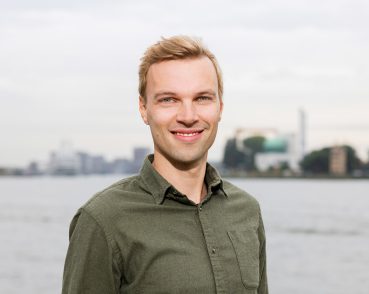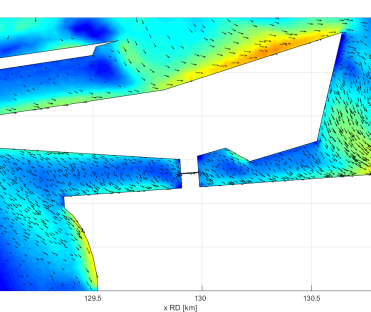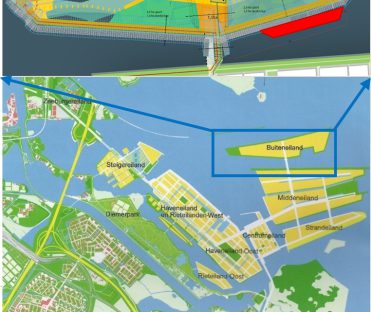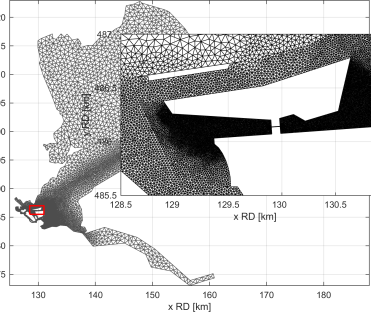Water exchange Buiteneiland IJburg
DOWNLOAD PROJECT SHEET
Quantification water exchange, consultation on mitigation

Municipality of Amsterdam

IJburg, Amsterdam

2020
Flow study in partially enclosed area
The island ‘Buiteneiland’ is being constructed as part of the land reclamation project IJburg. In the final situation, a waterway is planned between the islands ‘Strandeiland’ and ‘Buiteneiland’. However, during construction both islands are connected with a temporary (10-15 years) closed access dam. Due to this dam there will be less water exchange than in the final situation. Svašek has checked whether sufficient water exchange occurs on both sides of the dam for the temporary situation.
Svašek Hydraulics simulated currents in the IJmeer with the three-dimensional flow model FINEL to analyse the water exchange. Furthermore, the effectiveness of a mitigating measure is investigated.
Wind-driven three-dimensional flow in the entire IJmeer, Gooimeer and Markermeer has been accurately simulated with the FINEL model, including the influence of islands and shallows. To make the model suitable for determining the water exchange at Buiteneiland, the model has been locally refined to a resolution of 8x8m2. Four layers over the depth have been used in the entire computational model domain.
The flow in the model area is determined during a calm summer month with little wind and thus little current. If the water exchange is sufficient for this calm month, it is also expected to suffice for conditions in the 10-15 year period.
The measured wind speed and direction at the nearby KNMI station is used as input for the FINEL model. In the applied month, the average wind speed is 4 m/s and the maximum wind speed is 8.8 m/s. A number of cross-sections have been defined in the area in order to determine the water exchange. The discharge through these cross-sections is registered over time by the flow model. As a result, the residence time of the water can be derived by dividing the volume of water behind the cross-section by the discharge through the cross-section.
The model calculations show that residence times remain below the agreed upon permitted maximum. Therefore, it is expected that the water exchange is sufficient on both sides of the dam. To further increase the water exchange, a culvert has been applied as a mitigating measure. Considerable culvert dimensions are required to have a significant effect on the flow. In this case, a culvert with a flow surface of 3x3m2 was chosen. With this culvert, the residence times are reduced by 10 to 25%.
Lennard Spaans
Project leader

MORE INFORMATION ABOUT SVAŠEK OR OUR EXPERTISES?
Please contact us or make an appointment.
CONTACT US


